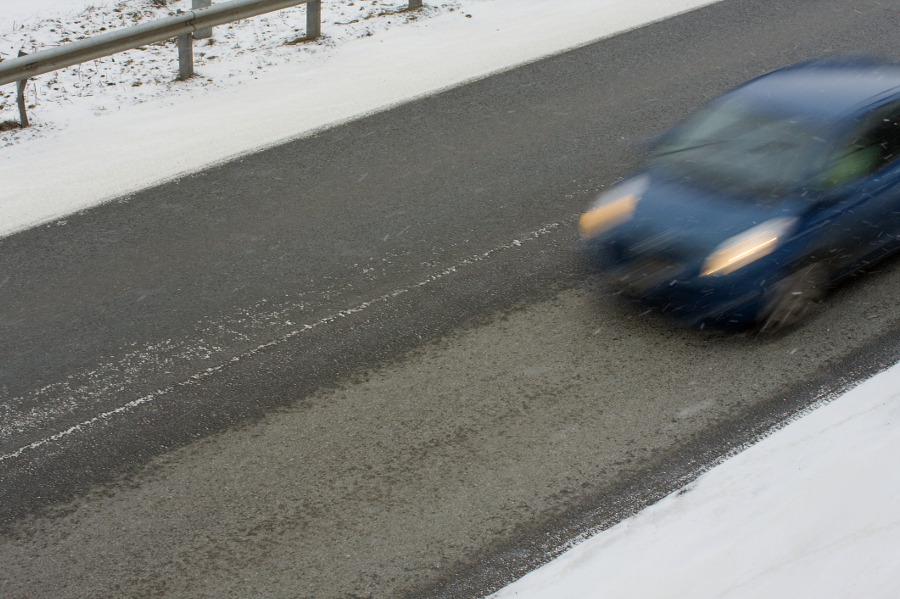Driving on ice is a challenge even for the most experienced of drivers. Because it’s only winter once a year, it’s not exactly the sort of thing you can get accustomed to. But for learners and new drivers it’s a particularly challenging prospect. Unless you learned to drive in the winter, it’s unlikely that you’ll have had any chance to practice driving on ice.

Like with most hazardous driving conditions, driving on ice is simply a case of keeping calm and taking it slow. But that said, it’s always better to be prepared, and to know in advance what to do should you lose control of your vehicle.
If you’re aware that conditions are freezing, it is best to only take necessary journeys, investigate alternative methods of transport or keep to major roads which are more likely to have been gritted.
How to Tell If You’re Driving on Ice – Spotting Ice on the Road
A lot of the time ice will be perfectly visible on the road. The road may be frozen over, and it may appear to sparkle as it reflects light. But if you’re driving at night, or if you’re driving on black ice (which is all but invisible), spotting ice on the road can be more difficult.
There are two things you should do. First, whenever you’re driving in winter, pay attention to your car’s thermometer. If it’s at 0°C or lower, then conditions are freezing. You should therefore drive with extra care on the assumption that you will encounter some ice. Many modern cars also display a warning graphic when the temperatures are below freezing.
Second, turn your music off and listen to your wheels. If your tyres are suddenly making virtually no noise at all, then you may be driving on ice.
Essential Safety Tips for Driving on Ice
- Stick to major routes which have a higher chance of having been gritted
- De-ice your car before you set out – remove all the frost and mist from your windscreen and any snow that’s accumulated on the roof and bonnet
- Remember that stopping distances can be up to 10 times longer when driving on ice, so keep your distance from the car in front
- Reduce your speed and aim for gentle manoeuvres
- To avoid wheel spin when pulling away, select second gear and ease your foot gently off the clutch
- Try and make your speed constant – choose the most suitable gear in advance so you don’t have to change down when climbing hills
- Go for third or fourth gear when driving downhill
- Never slam the brakes – always apply them gently
What to Do If You Start to Skid
If you feel yourself start to skid, try and keep your cool. If you panic, your instinct will be to slam the brakes, but this is probably the worst thing you can do when skidding on ice. Braking will just lock your wheels, causing you to skid even further.
Instead, depress the clutch and turn your steering wheel in the direction of the skid. Once your vehicle straightens, steer along the road until you regain control.
When conditions are particularly icy, the Met Office tends to issue warnings that all drivers should stay at home. Unfortunately, very few pay attention to this advice, which may explain why there are so many collisions in the winter months.
So if your journey’s absolutely necessary, plan your journey in advance so that you spend the majority of your time on major roads, as these are more likely to have been gritted.
And make sure you get yourself some learner car insurance or new driver insurance so that you’re covered in the event of a collision.



